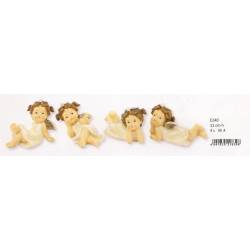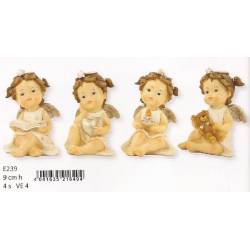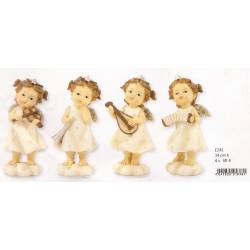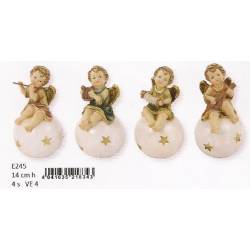Ningún producto
Belenes
- Artesania
- Esparto
- Enea
- Mimbre
- Madera de olivo
- Alfarería
- Calderería
- Bota de Vino
- Vidriera
- Jabones y cosmética natural
- Piel y Cuero
- Romana
- Laton, Bronce y Forja
- Belenes
- Bastones
- Artesanía de magia en madera, hueso y cuero
- Tonelería
- Artesanía Creativa
- Pascua
- Cestería/Hogar
- Decoración
- Abanicos y pay pay
- Alfombras
- Árboles
- Arcos y puertas
- Atados y escobas
- Bolas
- Cáctus
- Casitas para pájaros/Jaulas
- Cortinas
- Chimeneas
- Cuadros
- Escaleras
- Frutas/Verduras
- Frutos Secos
- Jarrones
- Lápices
- Persianas
- Pedestales
- Pinceles-caballetes-brochas-paletas
- Platos
- Portafotos
- Portavelas-Candelabros
- Toldos
- Trofeos
- Vallas
- Otros
- Animales
- Flores Artificiales
- Marino
- Muebles
- Jardín
- Vídrio/Cristal
- Cerámica
- Iluminación
- Halloween
- Navidad
- Cencerros Artesanales
- Recuerdo de Las Tablas de Daimiel
- Artesania en Miniatura Manchega
- Artesania en Madera
- Abanicos
- Antigüedades
Traduccion
Belenes:
El Belén es la representación plástica del nacimiento de Jesucristo, que se suele exponer durante las fiestas de Navidad en hogares, iglesias, comercios, etc. La construcción y exhibición de belenes forma parte de la liturgia navideña en muchas partes del mundo, especialmente en la tradición católica. Pero más allá del hecho religioso,...
Belenes:
El Belén es la representación plástica del nacimiento de Jesucristo, que se suele exponer durante las fiestas de Navidad en hogares, iglesias, comercios, etc. La construcción y exhibición de belenes forma parte de la liturgia navideña en muchas partes del mundo, especialmente en la tradición católica. Pero más allá del hecho religioso, el belén es una exaltación de la cultura rural y el mundo pastoril donde se recrean las montañas, los ríos y los que trabajan la tierra con sus manos. En los hogares, montar un belén es una actividad especialmente lúdica para los niños.
La primera celebración navideña en la que se montó un belén para la conmemoración del nacimiento de Jesucristo fue en la Nochebuena de 1223, realizado por San Francisco de Asis, en una cueva próxima a la ermita de Greccio (Italia). La escena del nacimiento de Cristo no fue representada con figuritas y miniaturas de objetos cotidianos, como hacemos actualmente, ni con personas, aunque para la ocasión San Francisco sí utilizó animales. Se celebró la misa nocturna acompañada de una representación simbólica de la escena del nacimiento, mediante un pesebre (sin niño) con el buey y la mula, basándose en la tradición cristiana y los Evangelios apócrifos, así como en la lectura de Isaías: "Conoce el buey a su dueño, y el asno el pesebre de su amo. Israel no conoce, mi pueblo no discierne" (Is. 1,3). Estos animales ya aparecen en el pesebre del siglo IV, descubierto en las catacumbas de la Basílica de San Sebastián de Roma, en el año 1877. Cuenta San Buenaventura en su "Legende de Santi Francisci" que tras celebrar la misa el sacerdote sobre el pesebre (utilizándolo como altar), San Franciso cantó el Evangelio y realizó la predicación sobre el nacimiento de Cristo, hijo de Dios, en circunstancias tan humildes como las que en aquel momento se reproducían (es decir, en una fría noche de invierno, en el interior de una cueva, resguardado en el lugar donde comían los animales que, junto al Niño, lo calentaban con su aliento, causando una enorme emoción entre los asistentes, de tal forma que el señor del lugar, Juan de Greccio "aseguró que vio un hermoso niño dormido en el pesebre, que el padre Francisco cogió en sus brazos y lo hizo dormir" Se supone que tras esta primera ocasión, que más que un belén puede asimilarse a un drama litúrgico se fue popularizando la instalación de belenes en las iglesias durante la Navidad, con figuras de terracota, cera o madera en vez de seres vivos.
Antes de la celebración de Greccio existen muchos antecedentes de representación plástica del nacimiento de Jesús, tanto en las Catacumbas romanas (lo que da idea de su relación con el cristianismo primitivo) como en las iglesias y otros lugares relacionados con el culto religioso cristiano. Los antropólogos e historiadores relacionan directamente las figuras del belén con diferentes objetos de culto de formas antropomórficas y animales, desde las Venus prehistóricas hasta las pequeñas esculturas griegas llamadas tanagras, pero muy especialmente por el culto romano a los dioses del hogar (lares) que se realizaba también mediante pequeñas esculturas con forma humana y que se custodiaban en el larario.
En todo caso, a partir del siglo XIV, (fundamentalmente a través de los monjes franciscanos, cuya regla consistente en estricta pobreza, humildad, sencillez y cercanía al pueblo -frente a órdenes más ricas, "aristocráticas" y cercanas al poder político- se avenía muy bien con el humilde nacimiento del Mesías, por lo que usaron su representación como elemento de predicación, considerándose por tanto el pesebre un invento franciscano, cultivado especialmente por éstos y por sus las restantes órdenes franciscanas, como las clarisas y los capuchinos) el montaje de los belenes por Navidad se consolidó como tradición en la península itálica y fue pasando al resto de Europa, al principio como práctica eclesiástica, posteriormente aristocrática y finalmente popular. Sucedió de esta forma en España, ya que cuando a mediados del siglo XVIII el rey de Carlos VII de Nápoles pasó a ser rey de España, promovió la difusión de los nacimientos entre la aristocracia española, llegando posteriormente a la práctica popular en la toda España y en América.
En el siglo XVIII en América, tras la disolución por decreto papal de la orden de los jesuitas, los franciscanos ocuparon su lugar y usaron los belenes como método de evangelización. Allí son habitualmente anacrónicos, ya que incluyen animales y plantas americanas, que en Palestina no se conocían en tiempos de Jesús, como los guajolotes, magueyes y nopales; pero que recuerdan el carácter rural de la escena. Esta peculiaridad se debe también a que en la parte latinoamericana situada en el Hemisferio Sur del planeta, en Navidad no se celebra el solsticio de invierno, sino el del verano, por lo que el clima y los productos agrícolas sudamericanos son muy diferentes a los europeos y palestinos.
Los países belenistas son, en Europa: España, Portugal, Francia, Italia, Alemania, Austria, Hungría, Chequia, Eslovaquia y Polonia; asimismo son construidos en toda Latinoamérica y en la actualidad en los Estados Unidos. La tradición de las iglesias protestantes no es aficionada al belén, por su origen iconoclasta.
A partir del siglo XV se generalizó la costumbre del belén. En 1465, en el Renacimiento, se fundó en París la primera empresa fabricante de figuras de belén. En Alcorcón se creó el primer taller belenista peninsular en 1471, y tenía influencias de Inglaterra que no llegaron al taller belenista hasta 1501. El tercer en producir figuritas belenistas fue laRepública de Siena en 1475, de estilo renacentista. El cuarto país en crear figuritas belenistas fue Portugal en 1479, la primera fábrica, que se encontraba en Lisboa, fue quemada por los martinistas en 1835. Cuando Inglaterra adoptó el anglicanismo, las figuritas belenistas fueron quemadas, y debido al rechazo a los íconos, en 1601 se hizo un decreto, la "Bethelem Ban", y quien no lo cumpliera sería condenado a muerte; en el siglo XIX con la consolidación de la tolerancia religiosa, se levantó esa condena. La popular "Fira de Santa Llúcia" de Barcelona, de venta de figuras y objetos para el belén, existe por lo menos desde 1786. Cataluña, Murcia y Madrid, durante el siglo XX, eran centros donde se fabricaron más de cuatrocientos millones de figuras de belén. En la actualidad existen numerosos talleres artesanales en Cataluña, Murcia, Andalucía y algunos otros en el resto de España que continúan haciendo figuras, que son conocidas y apreciadas en todo el mundo.
Es interesante destacar, que en la ciudad Patrimonio de la Humanidad de San Cristóbal de La Laguna en la isla de Tenerife en España, es de donde primero se tiene constancia en este país, de que se expuso de forma pública en una casa particular y fuera de lo que es un templo, un Portal de Belén para disfrute de todos los vecinos. Ocurrió en el siglo XVII en el domicilio de la familia Lercaro en la calle San Agustín de este municipio, edificio que hoy alberga el Museo de Historia tinerfeño y en el que se conserva este precioso Belén procedente de Génova en Italia que se muestra a sus visitantes. Asimismo, fue el santo tinerfeño Pedro de San José Betancur, franciscano y fundador de la Orden Betlemita y también en el siglo XVII, uno de los principales precursores del Belenismo en las tierras americanas descubiertas por los españoles.
En el siglo XIX apareció el arte (o afición artesana) del belenismo, que en general se practica a través de Asociaciones Belenistas, la primera de las cuales fue la de Wenns(Tirol, Austria) en 1860; aunque se cree que en Barcelona ya existía una asociación belenista anterior a esta fecha, su creación oficial fue en 1863; en todo caso, y puesto que la asociación de Wens desapareció al cabo de un año de su fundación, la barcelonesa es la asociación con actividad en la actualidad más antigua del mundo. La asociación internacional es la Universalis Foederatio Praesepistica (UN-FOE-PRAE), fundada en Barcelona en 1952 y sede actual en Roma (Italia).
En Ravisan la tradición de los belenes se ha mantenido viva hasta nuestros días, conservando las técnicas ancestrales que aún perduran, puesto que la elaboración del belén continúa siendo manual y la materia prima básica es el barro.
Nativity scenes:
The Bethlehem is the plastic representation of the birth of Jesus Christ, which is usually exhibited during Christmas parties in homes, churches, shops, etc. The construction and display of nativity scenes is part of the Christmas liturgy in many parts of the world, especially in the Catholic tradition. But beyond the religious fact, the crib is an exaltation of rural culture and the pastoral world where mountains, rivers and those who work the land with their hands are recreated. In homes, riding a nativity scene is a particularly fun activity for children.
The first Christmas celebration in which a nativity scene was set up to commemorate the birth of Jesus Christ was on Christmas Eve of 1223, carried out by Saint Francis of Assisi, in a cave near the hermitage of Greccio (Italy). The scene of the birth of Christ was not represented with figurines and miniatures of everyday objects, as we do now, nor with people, although for the occasion San Francisco did use animals. The night mass was celebrated accompanied by a symbolic representation of the birth scene, through a manger (without child) with the ox and the mule, based on the Christian tradition and the apocryphal Gospels, as well as in the reading of Isaiah: "Meet the ox to its owner, and the donkey the manger of his master, Israel does not know, my people do not discern "(Isaiah 1,3). These animals already appear in the crib of the fourth century, discovered in the catacombs of the Basilica of San Sebastian in Rome, in the year 1877. Account San Buenaventura in his "Legende de Santi Francisci" after celebrating the priest on the manger mass (using it as an altar), St. Francis sang the Gospel and preached about the birth of Christ, son of God, in circumstances as humble as those that were reproduced at that moment (that is, on a cold winter night, in the inside a cave, sheltered in the place where the animals ate, that together with the Child, warmed him with his breath, causing an enormous emotion among the assistants, in such a way that the lord of the place, Juan de Greccio "assured that he saw a beautiful child asleep in the manger, which Father Francisco took in his arms and made him sleep "It is assumed that after this first occasion, more than a nativity scene can be assimilated to a liturgical drama was popularized the ins cutting nativity scenes in churches during Christmas, with figures of terracotta, wax or wood instead of living beings.
Before the celebration of Greccio there are many antecedents of plastic representation of the birth of Jesus, both in the Roman Catacombs (which gives an idea of its relationship with primitive Christianity) and in churches and other places related to Christian religious worship. Anthropologists and historians directly relate the figures of the Nativity scene with different cult objects of anthropomorphic and animal forms, from the prehistoric Venus to the small Greek sculptures called tanagras, but especially by the Roman cult to the gods of the hearth (hearths) He also made small sculptures in human form and they were kept in the lararium.
In any case, from the fourteenth century, (mainly through the Franciscan monks, whose rule consisting of strict poverty, humility, simplicity and closeness to the people - in the face of richer orders, "aristocratic" and close to political power- it went very well with the humble birth of the Messiah, so they used their representation as an element of preaching, thus considering the manger a Franciscan invention, cultivated especially by these and by their other Franciscan orders, such as the Poor Clares and the Capuchins). The setting of the cribs for Christmas was consolidated as a tradition in the Italian peninsula and was passed on to the rest of Europe, at first as an ecclesiastical practice, later aristocratic and finally popular. It happened in this way in Spain, because when in the middle of the eighteenth century the king of Charles VII of Naples became king of Spain, promoted the spread of births among the Spanish aristocracy, later reaching popular practice in the whole of Spain and in America.
In the eighteenth century in America, after the dissolution by papal decree of the order of the Jesuits, the Franciscans took their place and used the nativity scenes as a method of evangelization. There they are usually anachronistic, since they include American animals and plants, which in Palestine were not known in Jesus' time, such as turkeys, magueyes and nopales; but that remember the rural character of the scene. This peculiarity is also due to the fact that in the Latin American part located in the Southern Hemisphere of the planet, Christmas does not celebrate the winter solstice, but rather that of summer, so the climate and South American agricultural products are very different from the European ones. and Palestinians.
Los países belenistas son, en Europa: España, Portugal, Francia, Italia, Alemania, Austria, Hungría, Chequia, Eslovaquia y Polonia; asimismo son construidos en toda Latinoamérica y en la actualidad en los Estados Unidos. La tradición de las iglesias protestantes no es aficionada al belén, por su origen iconoclasta.
From the fifteenth century the custom of the Nativity scene became widespread. In 1465, in the Renaissance, the first manufacturer of nativity figures was founded in Paris. In Alcorcón the first peninsular belenista workshop was created in 1471, and had influences from England that did not arrive at the Nativity scene until 1501. The third one to produce nativity scenes was the Republic of Siena in 1475, of Renaissance style. The fourth country to create belenista figurines was Portugal in 1479, the first factory, which was in Lisbon, was burned by the Martinists in 1835. When England adopted Anglicanism, the Nativity scene figurines were burned, and due to the rejection of the icons, in 1601 a decree was made, the "Bethelem Ban", and whoever did not comply would be condemned to death; in the nineteenth century with the consolidation of religious tolerance, this condemnation was lifted. The popular "Fira de Santa Llúcia" in Barcelona, selling figures and objects for the nativity scene, exists at least since 1786. Catalonia, Murcia and Madrid, during the twentieth century, were centers where more than four hundred million figures were made of nativity scene At present there are numerous craft workshops in Catalonia, Murcia, Andalusia and some others in the rest of Spain that continue to make figures, which are known and appreciated all over the world.
It is interesting to note that in the World Heritage city of San Cristóbal de La Laguna on the island of Tenerife in Spain, it is the first record in this country, that it was publicly displayed in a private home and outside of what is a temple, a Portal of Bethlehem for the enjoyment of all the neighbors. Occurred in the seventeenth century in the home of the Lercaro family in the street San Agustín of this municipality, building that now houses the Museum of Tenerife history and in which this beautiful Bethlehem from Genoa in Italy is preserved that is shown to visitors . Likewise, it was the Saint of Tenerife, Saint Peter Betancur, a Franciscan and founder of the Betlemite Order, and also in the 17th century, one of the main precursors of Bethlehemism in the American lands discovered by the Spaniards or spanish people.
In the nineteenth century, art (or artisan hobby) of belenismo appeared, which is generally practiced through the Belenista Associations, the first of which was that of Wenns (Tirol, Austria) in 1860; although it is believed that in Barcelona there was already a Nativity scene association before this date, its official creation was in 1863; in any case, and since the association of Wens disappeared after one year of its foundation, the Barcelona is the association with activity currently the oldest in the world. The international association is the Universalis Foederatio Praesepistica (UN-FOE-PRAE), founded in Barcelona in 1952 and current headquarters in Rome (Italy).
In Ravisan, the tradition of nativity scenes has remained alive to this day, conserving the ancestral techniques that still remain, since the elaboration of the nativity scene continues being manual and the basic raw material is clay.













